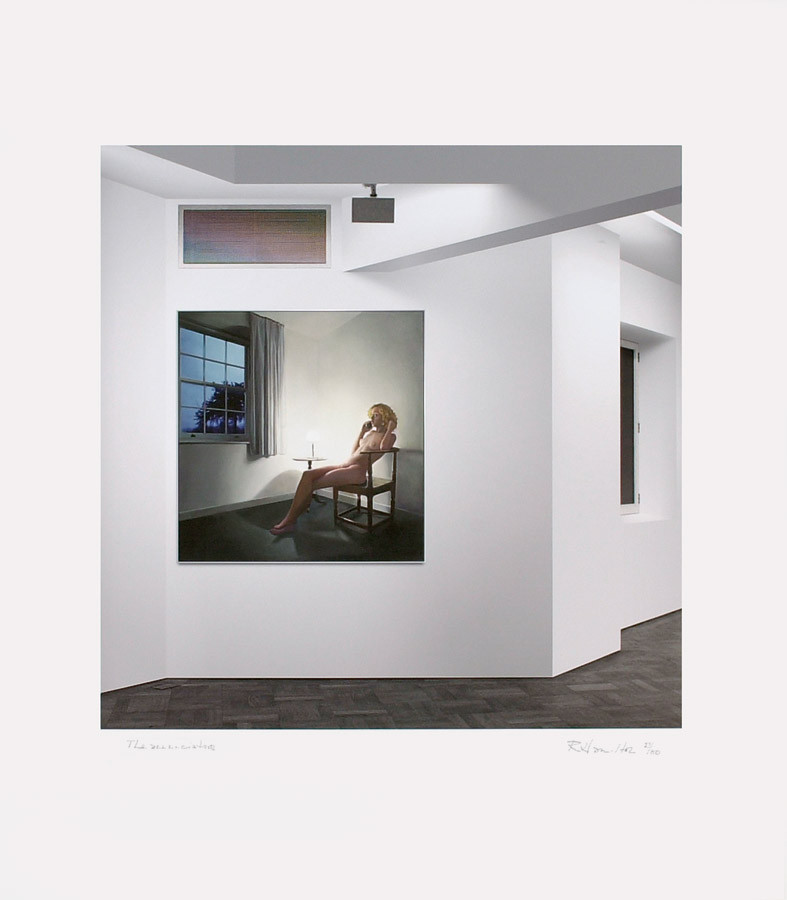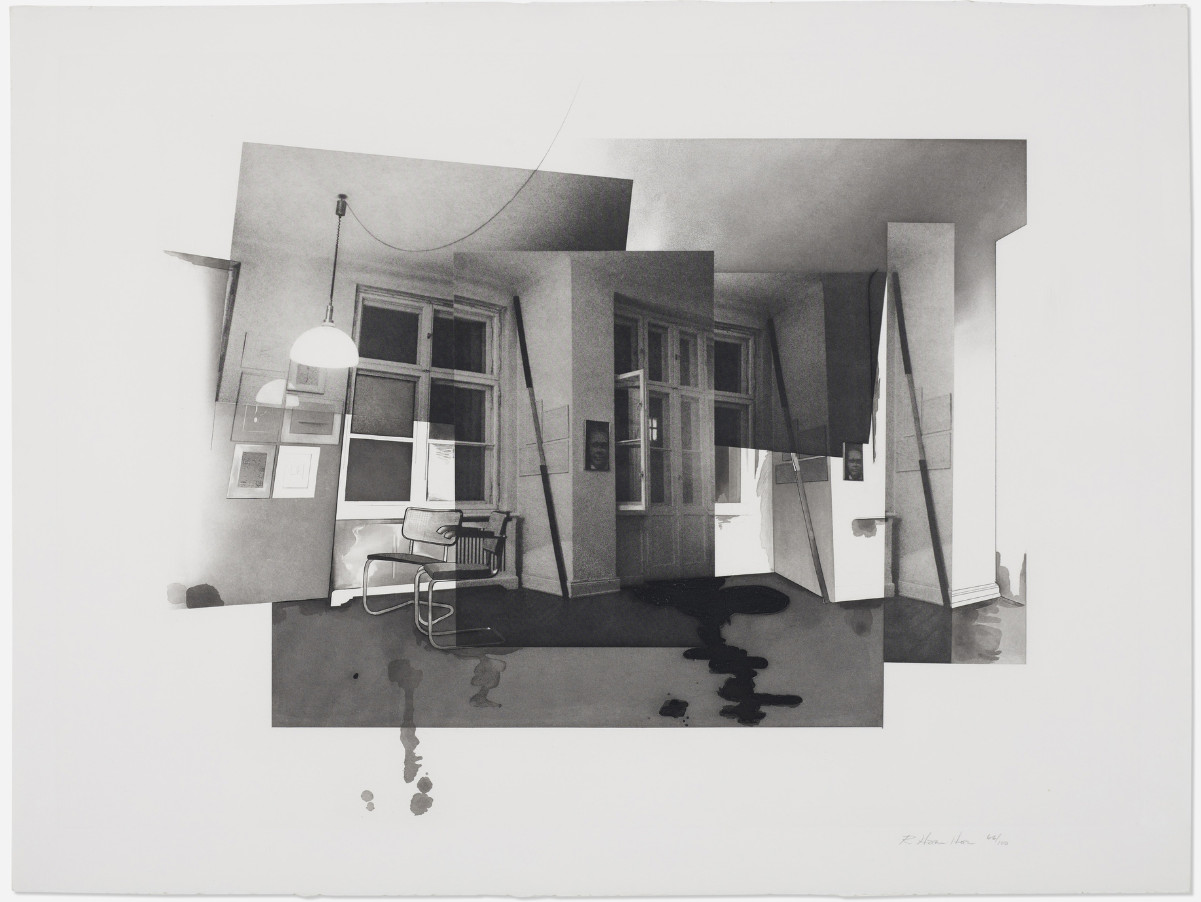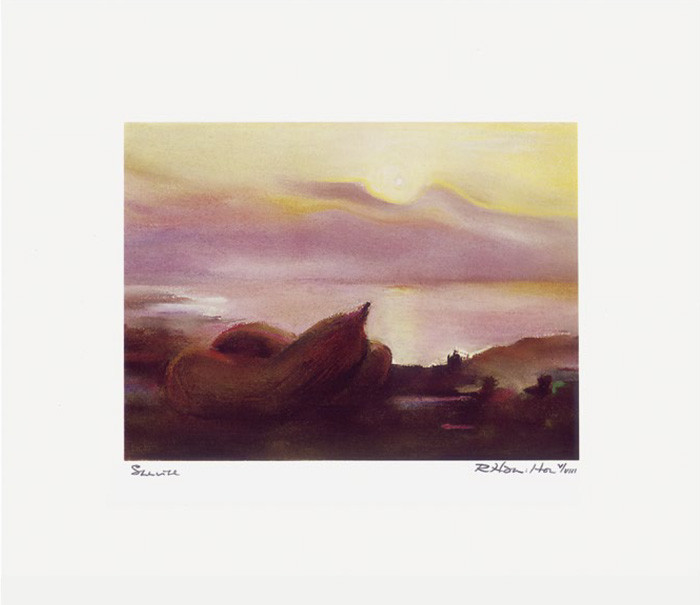Richard Hamilton
Richard Hamilton (1922-2011), born in London, UK, lived and worked in London. Known for his pioneering contributions to the Pop Art movement, Hamilton's work often combined elements of popular culture, consumerism, and mass media, questioning the impact of these forces on modern life. His famous 1956 collage Just what is it that makes today's homes so different, so appealing? is considered one of the earliest and most iconic works of Pop Art, blending imagery from advertisements, comics, and everyday consumer products. Throughout his career, Hamilton experimented with a wide range of media, including painting, printmaking, and installations. His work often addressed the relationship between art, technology, and society, reflecting his keen interest in how mass production and popular culture shape visual experience.
Richard Hamilton Editions

The Annunciation
2005
Inkjet digital print on rag paper, 59.4 x 68 cm (23½ x 26¾ in). Edition of 60, signed and numbered.
Hamilton describes his edition The Annunciation as a direct response to Fra Angelico’s Annunciation fresco in the Convent of San Marco in Florence, Italy. The print is as much a critique of the photographic and digital media with which it is made, as it is an examination of an artwork and theme that have long fascinated Hamilton.

Bathroom - fig. 1
1997
Published for documenta X.
Computer-processed Iris giclée print on rag paper, 61 x 56 cm (24 x 22 in). Edition of 50, signed and numbered.
About this edition, which Schellmann Art published for documenta X, Richard Hamilton said: "This print is among my first attempts to directly output an edition from work done on a graphics computer. The image derives from the Seven Rooms paintings now being shown at documenta – stark spaces, which I felt invited habitation. Inspired by a visit to an exhibition of late Degas paintings, I decided for a woman rising from her bath. Bathroom is complex in that a level of geometric abstraction is added to the surface. This is intended to flatten a representation of space so strongly accented that the areas of unbroken color have a hard time in holding their own. The fluidity of blurred photographic texture adds another dimension to the room – a psychological layer emerges into view."
EUR 4,500

Berlin Interieur
1979
Etching and aquatint, 56 x 76 cm (22 x 30 in). Edition of 100, signed and numbered.
For this edition, Richard Hamilton began with several collaged photographs of the interior of art dealer René Block’s Berlin apartment before transferring the images to a plate using photogravure. He then filled in the gaps with various etching techniques to enhance the sense of an interior space. The repeated image of a long stick leaning against a corner – actually a 1968 sculpture by Blinky Palermo – serves as a reminder of the fractured, multifaceted nature of the composition. What appears to be a photograph hanging at the center (and repeated to the right) is actually a painted portrait by Gerhard Richter, further confusing the distinction between the hand-drawn line and the photographic object.

Sunrise
1975
From Landscapes
Collotype/silkscreen on cardstock, 33 x 40 cm (13 x 17¼ in). Edition: 55, signed and numbered
Richard Hamilton’s edition Sunrise blends painterly atmosphere with technical experimentation, capturing the fleeting radiance of dawn through soft gradations of color. Produced in 1975 as part of the group portfolio Landscapes, the work exemplifies Hamilton’s innovative use of printmaking processes, here combining collotype with silkscreen to achieve subtle tonal effects alongside vivid contrasts. Evocative and quietly cinematic, Sunrise reflects Hamilton’s lifelong interest in the intersections of perception, reproduction, and modern visual culture.



